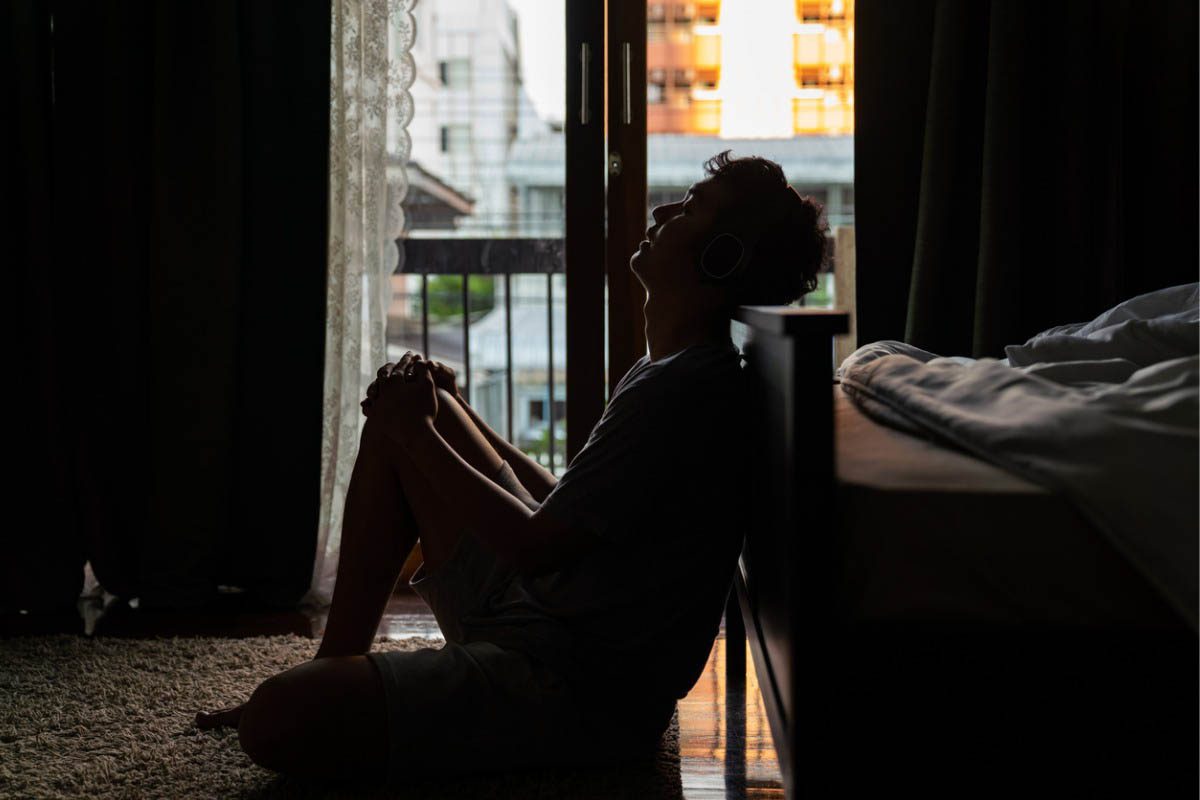

Since the first cases of coronavirus disease 2019 (COVID-19) were reported in China between the end of 2019 and early 2020, the infection has spread rapidly across the globe. Close to a million people have died. National governments have responded to the COVID-19 pandemic by introducing a series of measures to control its spread. These measures include stay-at-home orders (lockdown), school and business closures, and health service reconfiguration. The measures have had widespread secondary effects such as rises in unemployment, financial difficulties, social isolation, domestic violence, and difficulties accessing health services. There are concerns that these effects, together with consequences of the disease itself (eg, increases in mortality, fear of the disease) may have a profound impact on population mental health and suicide risk.1,2 However, few studies have investigated the impact on suicide of previous epidemics. There is a suggestion that suicides rose in the US during the 1918-1920 influenza pandemic3 and among older people in Hong Kong during the 2003 severe acute respiratory syndrome epidemic.4
During the 1918-1920 influenza pandemic, Taiwan experienced 2 waves of infection during October-December 1918, when an estimated 770,000 people (22.4% of the population) were infected, and December 1919-March 1920 (148,000 cases; 4.3% of the population).5 In response, the Japanese Colonial Government implemented policies such as closing schools and theaters and prohibiting religious activities. People were advised to keep physically distant from individuals with influenza. The restaurant and transportation industries were severely affected. In view of current concerns about the impact of the COVID-19 pandemic on suicide, we investigated changes in suicide rates in Taiwan at the time of the 1918-1920 influenza pandemic.
Methods
We extracted monthly mortality data for suicide and pneumonia in Taiwan (1910-1920) from the annual Statistical Reports of Taiwan Governor-General Office. Digitalized images of these reports were available online (http://tcsd.lib.ntu.edu.tw/). As there was no evidence for extra-Poisson variation, we used Poisson regression to estimate the suicide rate ratio (RR) for each month during and shortly after the pandemic (October 1918-December 1920), relative to that expected based on the pre-pandemic trend between January 1910 and September 1918, using log-transformed population as the offset. A similar approach has been used in previous studies examining the impact on suicide of global financial crisis6 and pesticide bans.7,8 Underlying linear trends were controlled for by including a month variable (ie, month 1 to month 132) in the model; seasonality was controlled for by including dummy variables for calendar month.
Results
On average, 585 people died of pneumonia per month in Taiwan in January 1910-September 1918 before the influenza pandemic. There was a marked increase in pneumonia deaths during the influenza pandemic, with 2 peaks: November 1918 (6,155 deaths; rate = 179.2 per 100,000 population) and January 1920 (7,429 deaths; 214.2 per 100,000) (Figure 1A). Monthly suicide deaths fluctuated between 1910-1920, with a median of 57.5 (range, 31-88) suicides and a rate of 1.69 (range, 0.95-2.76) per 100,000.
Suicide rates were no higher than expected during the first wave of infection (Figure 1B, Supplementary Table 1). During the second wave, there were increases in suicide of 33% (RR = 1.33; 95% confidence interval [CI], 1.00-1.77) and 35% (RR = 1.35; 95% CI, 1.05-1.75) in the second (January 1920) and fourth (March 1920) months of this wave, corresponding to an excess 14 (95% CI, 0-25) and 19 (95% CI, 3-31) suicides, respectively.
Discussion
The 1918-1920 influenza pandemic was associated with a small and short-lived increase in suicide in Taiwan. The number of excess suicide deaths was substantially lower than the number of influenza deaths. This short-lived rise in suicide is consistent with that seen in the US in 1918-1920.3 A number of factors may have contributed to the increase in suicide deaths; these include fear related to the high transmission and fatality rates, and the fear may have been more intense in the second wave of infection due to people’s experience of the first wave. Other possible contributing factors include social isolation resulting from the epidemic control measures and the economic impact of the pandemic. Furthermore, it has been suggested that influenza infection and/or the associated immune response might directly increase vulnerability to mood disorders and suicide.9
While the socioeconomic and technological (eg, communication technology) environments in which the 1918-1920 influenza pandemic occurred were very different from those of the present day, the findings may nevertheless have implications for suicide prevention during the COVID-19 pandemic. The short-lived (and small) rise in suicide deaths in 1918-1920 is reassuring, but the socioeconomic consequences of the current pandemic may be more challenging, particularly if the pandemic is long lasting and requires longer-term control measures.1 Equally, impacts may be mitigated by the extent to which improvements in communication technology and online help available in many countries allow people to maintain social connectedness and receive health care while remaining physically distant.10-12 If the rise in suicide deaths seen in 1918-1920 was due to direct biological effects of the virus on the brain, these may too be a concern in the current COVID-19 pandemic as there is evidence of neuropsychiatric effects of coronavirus infection.13
Given the absence of clear evidence of the likely impact of the pandemic on population mental health and suicide risk, it is critical to closely monitor these outcomes and conduct timely research to ensure that policy makers make the best decisions to optimize population health.14
Published online: September 29, 2020.
Author contributions: Literature review: Drs Y.-H. Chang, S.-S. Chang, and D. Gunnell; study design: Drs Y.-H. Chang and S.-S. Chang; data preparation: Drs Y.-H. Chang and S.-S. Chang; data analysis: Drs Y.-H. Chang and S.-S. Chang; data interpretation: Drs Y.-H. Chang, S.-S. Chang, C.-Y. Hsu, and D. Gunnell; writing of the first draft of the manuscript: Drs Y.-H. Chang and S.-S. Chang; approval of the final article: Drs Y.-H. Chang, S.-S. Chang, C.-Y. Hsu, and D. Gunnell.
Potential conflicts of interest: The authors declare no competing interests.
Funding/support: The study was not funded. Dr Hsu is supported by Wan Fang Hospital (grant number 109-wf-swf-04). Dr Gunnell is supported by the National Institute for Health Research Biomedical Research Centre at University Hospitals Bristol and Weston NHS Foundation Trust and the University of Bristol, England.
Role of the sponsor: The sponsors had no role in the design and conduct of the study; collection, management, analysis, and interpretation of the data; preparation, review, or approval of the manuscript; or the decision to submit the manuscript for publication.
Supplementary material: See accompanying pages.
References
1.Gunnell D, Appleby L, Arensman E, et al; COVID-19 Suicide Prevention Research Collaboration. Suicide risk and prevention during the COVID-19 pandemic. Lancet Psychiatry. 2020;7(6):468-471. PubMed CrossRef
2.Courtet P, Olié E, Debien C, et al. Keep socially (but not physically) connected and carry on: preventing suicide in the age of COVID-19. J Clin Psychiatry. 2020;81(3):20com13370. PubMed CrossRef
3.Wasserman IM. The impact of epidemic, war, prohibition and media on suicide: United States, 1910-1920. Suicide Life Threat Behav. 1992;22(2):240-254. PubMed
4.Cheung YT, Chau PH, Yip PS. A revisit on older adults suicides and severe acute respiratory syndrome (SARS) epidemic in Hong Kong. Int J Geriatr Psychiatry. 2008;23(12):1231-1238. PubMed CrossRef
5.Ting K-C. The outbreak in Taiwan during the 1918 influenza pandemic [in Chinese]. An Introduction of Avian Influenza (H5N1). National Health Research Institutes; 2008:79-103.
6.Chang SS, Stuckler D, Yip P, et al. Impact of 2008 global economic crisis on suicide: time trend study in 54 countries. BMJ. 2013;347:f5239. PubMed CrossRef
7.Cha ES, Chang SS, Gunnell D, et al. Impact of paraquat regulation on suicide in South Korea. Int J Epidemiol. 2016;45(2):470-479. PubMed CrossRef
8.Knipe DW, Chang SS, Dawson A, et al. Suicide prevention through means restriction: impact of the 2008-2011 pesticide restrictions on suicide in Sri Lanka. PLoS One. 2017;12(3):e0172893. PubMed CrossRef
9.Okusaga O, Yolken RH, Langenberg P, et al. Association of seropositivity for influenza and coronaviruses with history of mood disorders and suicide attempts. J Affect Disord. 2011;130(1-2):220-225. PubMed CrossRef
10.Yip PSF, Chau PH. Physical distancing and emotional closeness amidst COVID-19. Crisis. 2020;41(3):153-155. PubMed CrossRef
11.Torous J, Jפn Myrick K, Rauseo-Ricupero N, et al. Digital mental health and COVID-19: using technology today to accelerate the curve on access and quality tomorrow. JMIR Ment Health. 2020;7(3):e18848. PubMed CrossRef
12.Galea S, Merchant RM, Lurie N. The mental health consequences of COVID-19 and physical distancing: the need for prevention and early intervention. JAMA Intern Med. 2020;180(6):817-818. PubMed CrossRef
13.Rogers JP, Chesney E, Oliver D, et al. Psychiatric and neuropsychiatric presentations associated with severe coronavirus infections: a systematic review and meta-analysis with comparison to the COVID-19 pandemic. Lancet Psychiatry. 2020;7(7):611-627. PubMed CrossRef
14.Niederkrotenthaler TGD, Gunnell D, Arensman E, et al. Suicide research, prevention and COVID’ 19: towards a global response and the establishment of an international research collaboration [published online ahead of print July 27, 2020]. J Crisis Intervention Suicide Prev. CrossRef
aInstitute of Health Behaviors and Community Sciences, College of Public Health, National Taiwan University, Taipei, Taiwan
bInstitute of Health Policy and Management, College of Public Health, National Taiwan University, Taipei, Taiwan
cDepartment of Public Health, College of Public Health, National Taiwan University, Taipei, Taiwan
dPsychiatric Research Center, Wan Fang Hospital, Taipei Medical University, Taipei, Taiwan
eDepartment of Psychiatry, Wan Fang Hospital, Taipei Medical University, Taipei, Taiwan
fDepartment of Psychiatry, School of Medicine, College of Medicine, Taipei Medical University, Taipei, Taiwan
gPopulation Health Sciences, University of Bristol Medical School, Bristol, United Kingdom
hNational Institute for Health Research Biomedical Research Centre, University Hospitals Bristol and Weston NHS Foundation Trust, Bristol, United Kingdom
*Corresponding author: Shu-Sen Chang, PhD, Institute of Health Behaviors and Community Sciences, and Department of Public Health, College of Public Health, National Taiwan University, 17 Xu-Zhou Road, Taipei City 100, Taiwan ([email protected]).
J Clin Psychiatry 2020;81(6):20l13454
To cite: Chang Y-H, Chang S-S, Hsu C-Y, et al. Impact of pandemic on suicide: excess suicides in Taiwan during the 1918-1920 influenza pandemic. J Clin Psychiatry. 2020;81(6):20l13454.
To share: https://doi.org/10.4088/JCP.20l13454
© Copyright 2020 Physicians Postgraduate Press, Inc.
Editor’s Note: We encourage authors to submit papers for consideration as a part of our Focus on Suicide section. Please contact Philippe Courtet, MD, PhD, at [email protected].
This PDF is free for all visitors!





